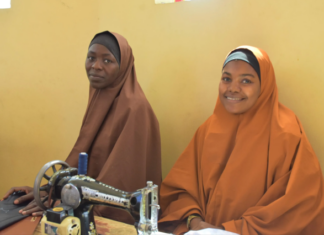Nigerian women cut 88%, men 92% but gap wider in internet use
By Jeph Ajobaju, Chief Copy Editor
Women in Nigeria are only 4 per centage points adrift of men in phone ownership but men are way ahead in internet use for a variety of factors that put women in disadvantage, including income levels.
Some 92 per cent of Nigeria’s adult males have mobile phones and the number among adult females is 88 per cent but 20 per cent more men (at 54 per cent) use mobile internet than women (34 per cent), according to the Global System for Mobile Communications Association (GSMA).
GSMA – the global body of telecom operators – said 37 per cent more men use mobile internet than women in Sub Saharan Africa (SSA) and the gap in phone ownership is lower than the gap in mobile internet usage.
GSMA noted in its Mobile Gender Gap Report (2022) that countries with the lowest levels of mobile penetration tend to have the widest gender gaps in mobile ownership and mobile internet use.
“There are, however, some exceptions where countries have high levels of mobile ownership but relatively wide gender gaps in mobile internet use.
“In particular, Kenya and Nigeria have high levels of mobile ownership among both men and women, but the mobile internet gender gaps are wide, at 38 per cent and 36 per cent, respectively,” GSMA said.
“In Kenya, the popularity of M-Pesa, Safaricom’s mobile money offering, appears to have boosted mobile ownership among both men and women, but there is still a relatively low uptake of mobile Internet, especially among women.
“Across the survey countries, the gender gap in mobile ownership has changed very little over the years.
“Meanwhile, the gender gap in mobile internet use has narrowed in Kenya and Pakistan (although still substantial), but widened in India, Bangladesh, Nigeria, and Guatemala.
“In India and Bangladesh, men’s mobile internet use has increased while women’s has remained flat. In Nigeria, men’s use has remained flat, while women’s use has decreased.
“In Guatemala, both men and women have increased their mobile internet use, but men have experienced a higher growth rate.
“These changes have all contributed to an overall widening of the mobile internet gender gap across low- and middle-income countries in 2021.”
_________________________________________________________________
Related articles:
Phone subscribers notch 204m, MTN retains lead
Internet expansion squeezing telecom operators
NIN-SIM hassle stops 51m lines from doing business
_________________________________________________________________
Mobile phone accounts for 85% internet use
GSMA said there are about 3.2 billion people in low- and middle-income countries (LMICs) access the internet on a mobile phone, accounting for 85 per cent of broadband connection for men and women in the region.
The gender gap is rampant among women who are the most underserved, including those with low literacy, low incomes, who live in a rural area, or have a disability, the report added, according to reporting by The PUNCH.
Even when women have the same levels of education, income, literacy, and employment as men, they are still less likely to own a mobile phone or use mobile internet, suggesting other issues are at play, such as discrimination and social norms.
Gender gap closure could yield $140m revenue
The report also said
A 2019 research estimated that closing the gender gap in mobile ownership and use in LMICs could deliver $140 billion in additional revenue to the mobile industry over a five-year period and could generate a 10 per cent to 41 per cent revenue increase for the mobile industry in the countries surveyed in Africa.
There are 372 million women without a mobile phone in LMICs as a result of affordability, literacy and digital skills, and safety and security.
The gender gap in smartphone ownership widened slightly across the board in 2021 although the gender gap had been reducing year on year across middle-income countries over the past five years from 20 per cent in 2017 to 16 per cent in 2020.
Women are now 18 per cent less likely than men to own a smartphone, which translates into 315 million fewer women than men owning a smartphone.
This year’s increase was driven by a rise in the smartphone gender gap in South Asia, as well as a continued increase in the smartphone gender gap in SSA countries.













